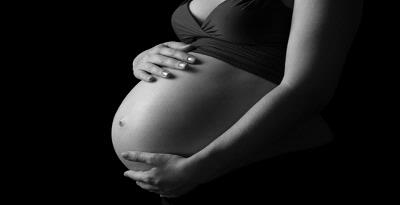For some expectant mothers, a little pain can lead to the emergence of dangerous alarm and direct visit to the obstetrician. For expectant mothers who else, the same pain sometimes ignored. They think it is a normal occurrence in pregnancy.
How to distinguish between symptoms that require immediate medical attention with a harmless, which can be a material question for you when further consultations to a gynecologist?
The consensus is better safe than sorry. Arise when signs of the unusual that makes you hesitate, call or visit a doctor. There are some signs that should not be overlooked.
Here are seven signs that could potentially cause serious complications during pregnancy.
Signs 1: Bleeding in any trimester
Bleeding can mean many things. Severe bleeding accompanied by abdominal pain extremely well as being menstrual cramps, or feel faint and everything will happen in the first trimester, it could be a sign of pregnancy outside the womb, "said Peter Bernstein, MD, professor of clinical Obgin at Albert Einstein College of Medicine and Montefiore Medical Center in the Bronx.
Pregnancy outside the womb occurs when the fertilized egg implanted in another place, except in the womb. Pregnancy outside the womb can be life-threatening expectant mothers. Heavy bleeding with cramps can also be a sign of miscarriage in the first trimester or early second trimester.
In other words, bleeding at any stage during pregnancy is dangerous. Do not wait to see a doctor immediately if there is bleeding while you are pregnant.
Signs 2: Nausea and vomiting are severe
Nausea and vomiting worse until you can not hold any food in the stomach quite a dangerous situation. "If you can not eat or drink anything, dehydration threatens," said Bernstein.
You are also at risk of malnutrition, which can cause birth defects to preterm birth. Therefore, it is important to consult a physician if severe nausea and vomiting continued.
There is a safe drug that can be taken to control it. Maybe the doctor will recommend dietary changes, so you can find foods that do not cause nausea and vomiting.
Signs 3: Activity significantly decreased fetal
What does it mean if a potential baby, which is usually very keen to move, suddenly looks like a lack of energy? "If the baby in the womb is not actively engaged as usual, so the fetus can not get enough oxygen and nutrients from the placenta," says Bernstein.
How can we know? Bernstein recommends that you drink or eat something cold and then sleep on his side. Hold on whether the fetus will move.
The number of kicks can also be used as an indicator There is no standard for it, but 10 or more kicks in two hours is the normal amount. If less than that, immediately contact a doctor. Doctors have suitable tools to see if the fetus under normal conditions, moving, and grow according to the age of the womb.
Signs 4: Contractions early in the third trimester
Contractions can be a sign of premature birth. Unfortunately, many expectant mothers who confuse the true with the birth sign marks the birth of the "fake" (false labor).
False labor called Braxton-Hicks contractions. Contraction of the type that simply can not be predicted, not beritme and intensity did not increase. It will usually disappear within an hour or when you drink. While it marks the birth of a real contraction berinterval 10 minutes or less and the intensity increased.
What peling important thing is do not mess with the safety of newborn babies. If you are experiencing a contraction in the third trimester, do not waste time. Immediately see a physician. If the baby is still too young to be born, the doctor has births procrastination tool.
Signs 5: Water breaks you're walking into the kitchen and felt there dalarn large quantities of water flowed both feet. It could be due to a ruptured amniotic fluid. Or could the bladder. If you are not sure whether the water is amniotic fluid or urine, try to use the bathroom and urinate. If the fluid continues to flow, meaning that the amniotic fluid. You should immediately see a doctor or hospital.
Signs 6: Headache constant, abdominal pain, visual disturbances, and swelling during the third trimester
All the symptoms that could be a sign of preeclampsia. It is a serious condition that occurs during pregnancy and can be dangerous. Preeclampsia is characterized by high blood pressure and the presence of protein in the urine which normally occurs after the 20th week of pregnancy.
Contact your doctor immediately and consult your tension. Prenatal care can address early preeclampsia.
Signs 7: Symptoms of flu
In flu season, pregnant women usually will easily catch the flu than those who are not pregnant. That's because pregnancy gives added stress to the immune system. In addition, pregnant women at high risk for developing serious complications from flu.
Symptoms of flu include fever, cough, sore throat, runny nose, sneezing, nausea, vomiting, and diarrhea. If you are not pregnant and have symptoms of flu, as much as possible refrain from pregnant women; so that they are not infected.
In addition, if the expectant mother has a fever with body temperature above 38 degrees Celsius, there was a sign of infection. Again, do not delay to go to the doctor if it occurs.


 12:44 PM
12:44 PM
 Unknown
Unknown


0 comments:
Post a Comment